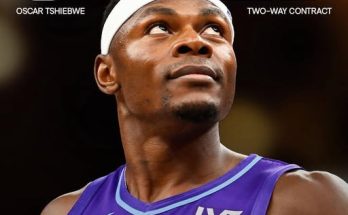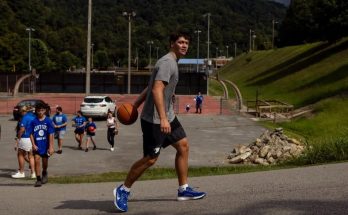In the ever-evolving world of professional hockey, contract negotiations often become a defining storyline that not only captures the attention of fans but also shapes the future direction of a franchise. The New York Rangers currently find themselves at the heart of such a narrative, with Artemi Panarin, their superstar winger, becoming the focal point of speculation surrounding a possible contract extension. While Panarin’s impact on the ice has been undeniable since arriving in New York, an insider has recently exposed one significant detail that appears to be stalling negotiations between the player and the organization, a detail that sheds light on the complex and delicate nature of high-stakes extensions in the NHL.
Artemi Panarin has been everything the Rangers could have hoped for when they signed him to a seven-year, $81.5 million deal in 2019. From his dazzling offensive skills to his ability to change games in a single shift, Panarin has lived up to his reputation as one of the league’s premier talents. He has consistently been among the top scorers, provided the Rangers with elite playmaking, and raised the ceiling of what the team could accomplish during his tenure. For fans, the question of whether Panarin should remain in blue beyond his current deal seems obvious—the answer is yes. However, negotiations are rarely dictated by pure talent alone, and in this case, the insider-revealed stumbling block is related to Panarin’s no-movement clause and how it fits into the Rangers’ long-term roster construction.
The no-movement clause, a contractual protection that grants players control over their future destinations, has become the focal point of the negotiations. Panarin’s current contract includes full no-move protection, which allows him to dictate whether he can be traded or sent down to the minors. The Rangers, mindful of the challenges this creates, are reportedly hesitant to extend another long-term deal with the same type of restrictions, especially as Panarin approaches his mid-thirties. The insider report emphasizes that this issue is the “one significant detail” that has kept both sides from moving forward, with Panarin’s camp preferring to maintain that level of security and the Rangers hoping for more flexibility as they navigate the team’s financial future.
The timing of these negotiations further complicates matters. The Rangers are a team caught between two timelines. On one hand, they are still pursuing their championship window with established veterans like Panarin, Mika Zibanejad, and Chris Kreider leading the charge. On the other, they have invested heavily in their young core, including Alexis Lafrenière, K’Andre Miller, and Kaapo Kakko, players who will eventually command significant raises as they enter their prime years. To sustain long-term competitiveness, the organization must be careful about salary cap allocation and contractual commitments that limit roster maneuverability. A no-movement clause essentially locks a player in place, which could become problematic if Panarin’s performance declines in the later years of an extension.
From Panarin’s perspective, his insistence on retaining full no-move protection is understandable. He has made it clear that he enjoys playing in New York, appreciates the stage Madison Square Garden provides, and values the stability he has built since signing with the Rangers. After years of bouncing from Chicago to Columbus and then to New York, Panarin has found a sense of belonging, and the no-movement clause gives him the assurance that he will not be forced into another relocation against his will. Players of Panarin’s caliber and status often expect, and usually receive, such contractual safeguards. In Panarin’s view, giving up that level of control could expose him to uncertainties that he has worked his entire career to avoid.
For the Rangers, however, the calculation is less sentimental and more pragmatic. General manager Chris Drury and the front office must weigh the risks of being saddled with a declining player at a high cap hit with no ability to move the contract. NHL history is littered with examples of teams stuck with unmovable deals that hindered their ability to adapt and compete. While Panarin has shown little sign of slowing down offensively, the physical nature of the sport makes it nearly impossible to predict how his game will age. The Rangers’ hesitation reflects their desire to avoid potential pitfalls while still acknowledging Panarin’s current value.
The insider’s revelation has sparked a wave of debate among fans, analysts, and former players. Some argue that Panarin has earned the right to demand no-movement protection, pointing to his elite production and the fact that he has been the Rangers’ most consistent offensive weapon since his arrival. They contend that the franchise should reward loyalty and performance rather than quibble over contract mechanics. Others, however, side with the organization’s cautious approach, noting that long-term no-move clauses have been the downfall of many teams, tying their hands when they needed flexibility the most. For these critics, the Rangers’ refusal to immediately grant Panarin’s request is not only logical but necessary for maintaining a sustainable path forward.
Beyond the immediate implications, the situation also speaks to broader trends in the NHL. More and more star players are seeking contractual protections, recognizing their leverage and the importance of stability in a league where trades and roster turnover are common. At the same time, front offices are becoming increasingly wary of locking themselves into restrictive deals, particularly in a salary-cap system that punishes inflexibility. This tension between player security and team adaptability has become one of the defining dynamics of modern contract negotiations, and the Panarin-Rangers standoff is a perfect example of that struggle playing out in real time.
Another factor adding weight to the negotiations is the Rangers’ recent playoff disappointments. Despite a talented roster, the team has not yet reached the ultimate goal of winning the Stanley Cup with Panarin. Critics have occasionally questioned his postseason performances, suggesting that while he dominates in the regular season, his impact diminishes when the games matter most. Whether fair or not, these criticisms influence the front office’s thinking. Committing to another massive deal with Panarin, complete with full no-movement protection, becomes harder to justify if there are lingering doubts about his ability to carry the team deep into the playoffs.
Still, it would be unfair to dismiss Panarin’s importance to the Rangers’ identity. He is not just a high-scoring winger; he is a symbol of the franchise’s resurgence. His signing in 2019 marked a turning point for the Rangers, signaling that New York was once again a destination for elite players and that the rebuild was giving way to contention. His presence has elevated those around him, given the team credibility, and energized the fan base. Losing him, or even allowing uncertainty about his future to linger, would send shockwaves through the organization and the city. For many fans, granting him the protection he desires is a small price to pay for maintaining stability and ambition.
The negotiations, therefore, represent more than just a contractual tug-of-war. They embody the delicate balance every franchise must strike between loyalty to its stars and the cold calculus of roster management. The insider’s detail about the no-movement clause crystallizes this tension: one side seeking security, the other flexibility, with both recognizing the stakes are monumental. The outcome will likely shape not only Panarin’s future but also the Rangers’ trajectory in the coming years.
As talks continue, it remains unclear which side will blink first. Will the Rangers relent and offer Panarin the no-movement protection he demands, betting on his ability to remain an elite force into his late thirties? Or will Panarin compromise, perhaps accepting a modified clause or shorter term in exchange for a lucrative salary? The resolution may take time, and until then, speculation will continue to swirl. What is certain, however, is that this single contractual detail has become the fulcrum upon which the Rangers’ future balance rests.
In the end, negotiations of this magnitude are always about leverage, perception, and long-term vision. Panarin knows his worth and his influence, while the Rangers understand both the value he brings and the risks of overcommitting. The insider’s revelation has illuminated a rare glimpse into the real sticking point, transforming the conversation from vague speculation to concrete understanding. Fans may debate whether the no-movement clause is worth fighting over, but for the Rangers and Panarin, it is the defining issue. As the stalemate continues, one truth remains clear: this decision will echo far beyond the negotiation table, shaping the legacy of one of the NHL’s brightest stars and the direction of one of its most storied franchises.



